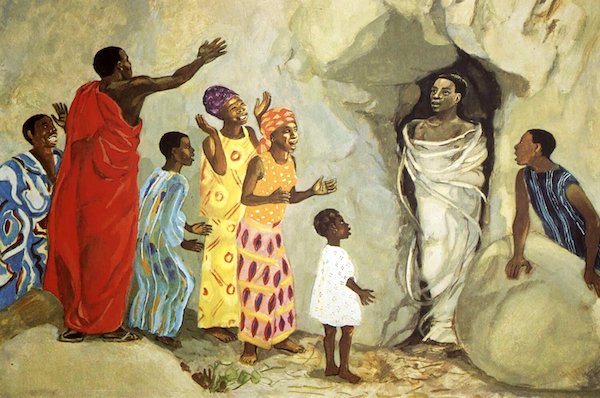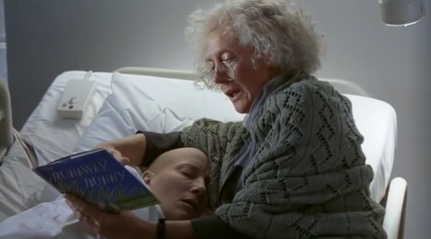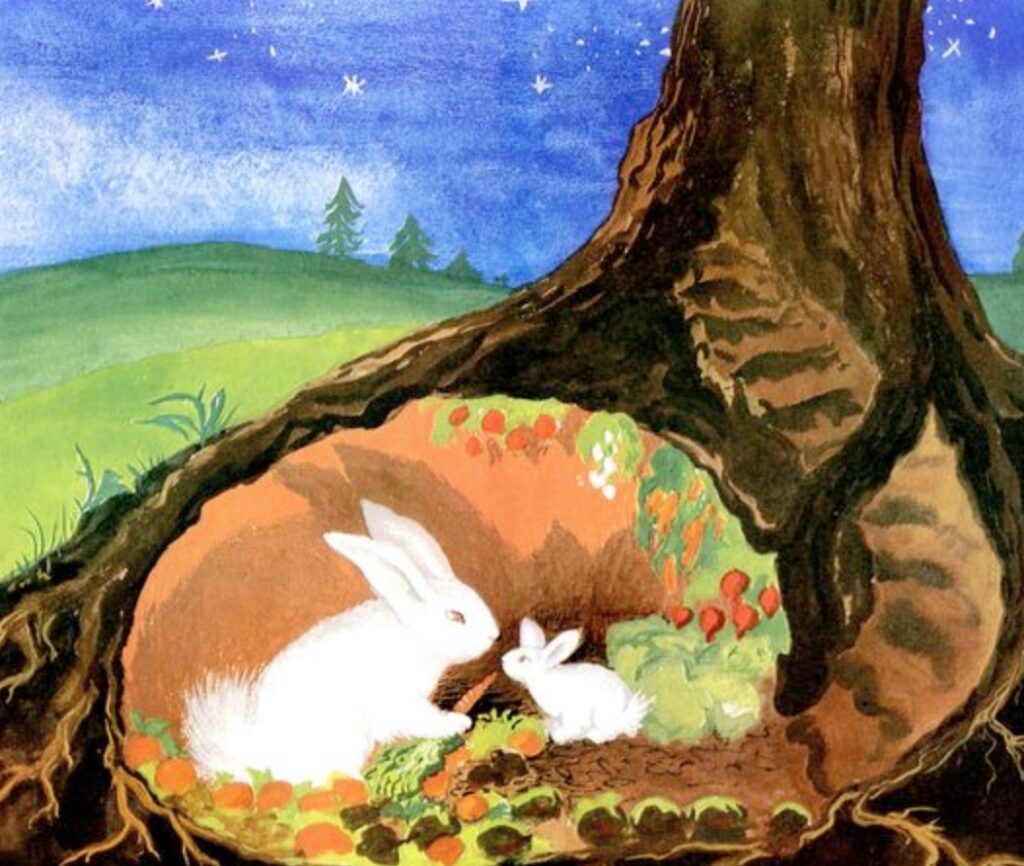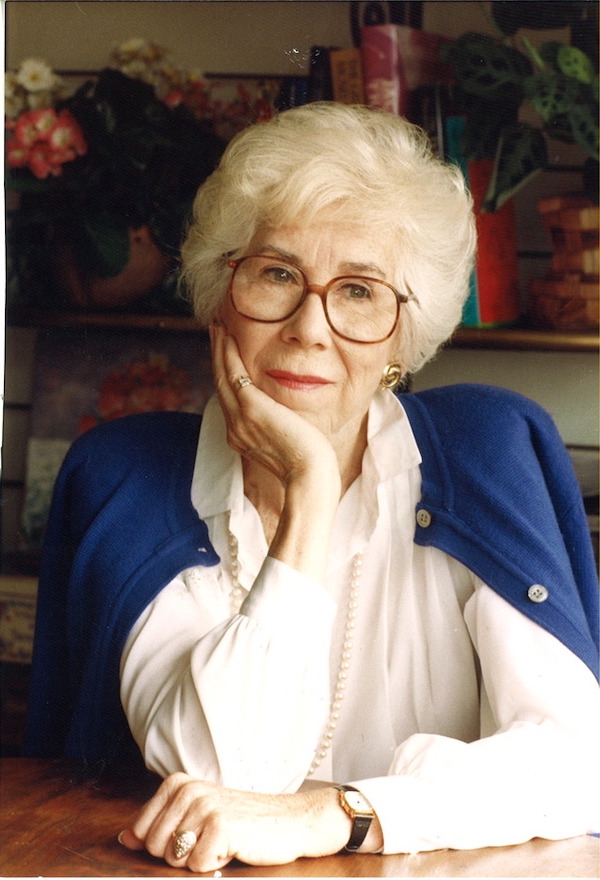Come & See (John 11: 1-45)

“Like an infant swaddled, Lazarus is bound in strips of cloth, his face wrapped in bands of fabric. ‘Unbind him and let him go.’ The fetters of death and despair are unfastened. The shroud of hopelessness is stripped away. Jesus stands at the entrance of the tomb, facing death, and says, ‘Take on hope, all ye who enter here.’ Although death seems to govern, to shadow, to define our lives, from beginning to end, forcing us to elude and even deny the splendor of everyday ‘living,’ ruining every carrot we’re offered, there is something just outside our tomb, something exhorting us loudly to come forth and live, despite it all.”—Robin White
Wing + Prayer
By The Reverend Robin White


Editor’s Note: The Reverend White dedicates her January 2022 column to her neighbor, Davie Kirkley.
PENDLETON South Carolina—(Weekly Hubris)—1 January 2021—“Lord, if you had been here, my brother would not have died.” These are Martha’s first words to Jesus when she meets him on the road to Bethany following the death and burial of Lazarus. Later, Martha takes her sister, Mary, to Jesus and her words are, likewise, “Lord, if you had been here, my brother would not have died.” Mary’s words reflect our common experience of loss and of our universal complaint to the heavens (as well as the shared human experience of helplessness).
Martha and Mary believe it might all have been different: “Lord, if you had been here . . .” If only. But Jesus would appear to have come too late. Death has already occurred. Martha, Mary, and we ourselves could, can, do nothing in the face of death, and the one who can, presumably, has tarried; will always tarry.
God’s arrival in our lives often seems delayed. The words of Martha and Mary echo our shared disappointment. Lord, if you had been here, the plague would not have claimed millions. Lord, if you had been here, our children would not have been killed by gunfire. Lord, if you had been here, the cars would not have crashed, the pregnancy would not have been lost, the tumor would not have metastasized. Lord, if you had been here, our loved one would not have died; would not be dying; would not die. Lord, if you were here, death would . . . have no dominion; none of us would experience the corruption of the tomb.
So . . . first things first: why wasn’t Jesus there with Lazarus and his sisters?
The thing about John’s report of the story that bothers me most is that Lazarus has to die in the first place. If Jesus had gone to him when he first received word of his illness, Lazarus might have been healed. Surely, with the Lord there, Lazarus would not have sickened. Instead, he dies. Instead, his loved ones must close his eyes, bathe his limbs, swaddle him, like a newborn, in grave clothes, and shut him away in the dark. So why does Jesus wait? Why does Lazarus have to enter the tomb? Why do Mary and Martha have to experience grief?
Why, Lord, why do we, must we, die at all?
In response to her helpless grief, Jesus looks Martha in the eye and says, “I am the resurrection and the life. Those who believe in me, even though they die, will live, and everyone who believes in me will never die.”
It is the man, Jesus, who looks into the eyes of Martha, but it is not a mortal who speaks these words, this Word to her and all who have ears to hear: it is . . . something else. And, I post, that something makes all the difference.
John’s gospel begins with the Word “Logos,” the Word that was with God and the Word that was God. It is the embodied voice of the same “Logos” that called forth the light. It is that voice of creation, the voice that spoke the world into being, which/who now says, “Death is of no importance to you because the light cannot ever be extinguished.”
Life and death, death and rebirth: so intimately connected. Sometimes, it takes a death, or an impending death to make us truly and finally grasp life. Sometimes, those who are dying finally and fully begin to live.
Theologian William Willimon tells of a woman who wrote this for the Personals Section in the newspaper: “I’m a 58-year-old woman with, doctors tell me, one year to live. I would like to spend that year doing something meaningful, interesting, and fun. I like C-Span, Bill Moyers, Times crosswords, Nina Totenberg, Anna Quindlen, and Nevada. I don’t like George Will, R.J. Reynolds, computer talk, Fundamentalists, or California. I have limited stamina and resources. Have you any ideas how I can spend this year making a difference?”
Most of us may be thankful we don’t face such certain and frightening time constraints, and yet, in facing her death, this woman began actively searching for ways to live.
In the powerful play, Wit, a middle-aged college professor is diagnosed with terminal cancer. Early on in the play, she is faced with a choice: She can spend the rest of her time taking advantage of the health she has left, enjoying the good things life has to offer. Or, she can offer her body to science for experimental treatment, a treatment that will probably not cure her, but that will make her extremely sick and debilitated. She chooses the latter course, and then spends the rest of her life alone, in a sterile hospital room, where her only visitors are her doctors and nurses.

Every day, as she confronts her disease, and “treatments” that make her violently ill, she wrestles with death and life. She loses her hair, she loses weight, she loses any and all enthusiasm for living. Finally, in the last scene, one of her old professors comes to visit her. This old woman finds her once brilliant and vital student curled in a fetal position, too sick to lift her head. At first, the older woman grapples with how to help; what to say. What is there to say? But, as she recognizes the despair and the utter isolation of her former student—her disciple, in fact—she pulls from her bag a book she has purchased for her grandchild, climbs into the hospital bed, cradles the dying woman in her arms like an infant, and begins to read this story by Margaret Wise Brown:
Once there was a little bunny who wanted to run away, so, he said to his mother, “I am running away.”
“If you run away,” said his mother, “I will run after you.”
“If you run after me,” said the little bunny, “I will become a fish in a trout stream and I will swim away from you.”
“If you become a fish in a trout stream,” said his mother, “I will become a fisherman and I will fish for you.”
“If you become a fisherman,” said the little bunny, “I will become a rock on the mountain, high above you.”
“If you become a rock on the mountain high above me,” said his mother, “I will be a mountain climber, and I will climb to where you are.”
“If you become a mountain climber,” said the little bunny, “I will be a crocus in a hidden garden.”
“If you become a crocus in a hidden garden,” said his mother, I will be a gardener. And I will find you.”
“If you are a gardener and find me,” said the little bunny, “I will be a bird and fly away from you.”
“If you become a bird and fly away from me,” said his mother, “I will be a tree that you come home to.”
“If you become the wind and blow me,” said the little bunny, “I will join a circus and fly away on a flying trapeze.”
“If you become a tightrope walker and walk across the air,” said the bunny, “I will become a little boy and run into a house.”
“If you become a little boy and run into a house,” said the mother bunny, “I will become your mother and catch you in my arms and hug you.”
“Shucks” said the bunny, “I might just as well stay where I am and be your little bunny.”
And so he did.
“Have a carrot,” said the mother bunny.

Death and birth, so intricately and intimately connected.
When I stood at my father’s bedside, stroking his head as I watched him pass from life to death, there came to me a vivid image of him as a baby being born. As his eyes focused on the ceiling and behind him, I thought to myself, “He is watching his own birth.”
In the midst of my grief, it was a powerful and beautiful image to be given.
On the radio, I recently listened to a group of African drummers talking about their art. One of the drummers explained that the rhythm they beat out in their funeral processions is the same rhythm used at their baptismal ceremonies, because, for them, death and birth are so linked. The rhythm is that of the human heart: Life, death; life, death; death, rebirth.
In her book, The Poisonwood Bibile, Barbara Kingsolver tells the story of a fierce Evangelical Baptist missionary who, in 1959, takes his wife and four daughters to the Belgian Congo. When Ruth May, the youngest of the four children, dies suddenly of a snake bite, her older sister Adah says this:
“BECAUSE I COULD NOT STOP FOR DEATH—He kindly stopped for me. I was not present at Ruth May’s birth but I have seen it now, because I saw each step of it played out in reverse at the end of her life. The closing parenthesis, at the end of the palindrome that was Ruth May. Her final gulp of air as hungry as a baby’s first breath. That last howling scream, exactly like the first, and at the end a fixed, steadfast moving backward out of this world. After the howl, wide-eyed silence without breath. Her bluish face creased with a pressure closing in, the near proximity of the other-than-life that crowds down around the edges of living. Her eyes closed up tightly, and her swollen lips clamped shut. Her spine curved, and her limbs drew in more and more tightly until she seemed impossibly small. While we watched without comprehension, she moved away to where none of us wanted to follow. Ruth May shrank back through the narrow passage between this brief fabric of light and all the rest of what there is for us: the long waiting. Now she will wait the rest of the time. It will be exactly as long as the time that passed before she was born.”
But perhaps Adah sees only a fragment of the picture? There is something else to see, out of the corner of the eye.
When Jesus finally arrives in Bethany, he finds the mourners weeping, for Lazarus has been dead for four days. John tells us two times of Jesus’ response to the grief. The NRSV translation reads, “He was greatly disturbed in spirit and deeply moved.”
The Greek word ἐτάραξεν—to be agitated, stirred up, troubled—suggests that Jesus may even be angry. Why is he so disturbed, so agitated? Is it because of the grief that has fallen upon his friends? Is he angry at himself for taking so humanly long a time to get to Lazarus? Perhaps he is angry because those in attendance, even those who are his most beloved followers, do not understand what is happening in their midst.
And if this isn’t complicated enough, next we find Jesus weeping. Why does he cry if he knows he is about to raise Lazarus? The emotions swirling up around this death, around any death, are deep, disturbing, and bewildering.
Jesus asks, “Where have you laid him?”
And they say, “Lord, come and see.” This is where Jesus actually breaks down and weeps. He joins the human circle of grieving, of weeping.
In John’s gospel, the expression “Come and see” is a call to discipleship, an invitation to faith. In Chapter 1, those first disciples ask Jesus, “Where are you staying?” and he responds, “Come and see.” When the hesitant Nathanial inquires, “Can anything good come out of Nazareth?” Philip replies, “Come and see.” In Chapter 4, the Samaritan woman at the well runs to the people in her village, bidding them, “Come and see.”
And now this very same exhortation is being extended to Jesus: “Come and see.” Jesus is invited to identify with all those who struggle to live faithful lives, even when it means following that path to and through death. Perhaps Jesus also weeps because, at this moment, he recognizes he too has a choice, the universal human choice: To choose life, real life, not breathing-, eating- and walking-around life, but authentic life.
Life given, life lived for others, costs something, and that exorbitant cost moves us to tears . . . .
“Come and see” calls for intentionality, for commitment, for a willingness to abandon the old, to leave behind what might be considered sensible, to forgo the practical.
“Take away the stone,” calls for a willingness to enter life fully, with all its graphic and sometimes unpleasant details.
Martha worries about the stench because Lazarus has been in the tomb for four days. When the stone is removed, Jesus cries out into the darkness of the tomb, like the cry of one giving birth. Jesus screams out with everything he has, and it is a howl loud enough to wake the dead: “Lazarus, come out!”
And a dead man comes out.
Like an infant swaddled, Lazarus is bound in strips of cloth, his face wrapped in bands of fabric.
“Unbind him and let him go.”
The fetters of death and despair are unfastened. The shroud of hopelessness is stripped away. Jesus stands at the entrance of the tomb, facing death, and says, “Take on hope, all ye who enter here.”
Although death seems to govern, to shadow, to define our lives, from beginning to end, forcing us to elude and even deny the splendor of everyday “living,” ruining every carrot we’re offered, there is something just outside our tomb, something exhorting us loudly to come forth and live, despite it all.
And there really is no escaping this something. We can try to run and hide from it. There will be those who from the shadows will try their damndest to distract us, to muffle the sound, to blur our perception of it, but that Word, that Life that is the Light of all people, will not be denied.
Last night, watching the Rachel Maddow Show, as usual, I was asked to take on three grim realities: we have despoiled Planet Earth to the point of no return; our Republic is foundering on the shoals of a mass psychosis influencing the actions of so, so many of us; the viral pandemic, wave upon wave, has entered a new phase, overwhelming the hard-won tools to fight it forged over the past two years. And there is now no escaping “the tomb”: we all stand at the mouth of the darkness together.
But, standing here beside you, Beloved Friend, I choose to embrace you; to set a place at my table for you; to lighten your load and unbind your fetters however I can.
This is how we remain in the light. This is how we respond to the something.
Given the impossibility of escaping, we may as well stay where we are, living every moment, savoring and sharing every carrot given us.
In parting today, here is another parable to go with that of Lazarus:

Autobiography in Five Chapters
By Portia Nelson
Chapter I
I walk down the street.
There is a deep hole in the sidewalk.
I fall in.
I am lost . . . I am helpless.
It isn’t my fault.
It takes me forever to find a way out.
Chapter II
I walk down the same street.
There is a deep hole in the sidewalk.
I pretend I don’t see it.
I fall in again.
I can’t believe I am in the same place.
But it isn’t my fault.
It still takes a long time to get out.
Chapter III
I walk down the same street.
There is a deep hole in the sidewalk.
I see it is there.
I still fall in . . . it’s a habit.
My eyes are open.
I know where I am.
It is my fault.
I get out immediately.
Chapter IV
I walk down the same street.
There is a deep hole in the sidewalk.
I walk around it.
Chapter V
I walk down another street.
And here’s my own, early-2022 takeaway from Nelson’s poem and Lazarus’ fable, what passes for an epiphany, for me, as I enter my own seventh decade of life on this rapidly-warming planet.
Reflecting upon death daily—and we really have no choice but to reflect upon death daily—I choose to examine my shroud carefully and often. In me—just me—this donning of the shroud has begun to bring about a deep change of perspective about living with Lazarus’ (and my) certain death; the hole in our shared sidewalk. Living, while walking our shared streets, and feeling, to my core, that death and birth are entwined, is “another street” in and of itself.
I don’t promise that you can make this detour with me. But, for me, there is life at the end of our tunnel; there is something deathless in all of us who are, or were ever, alive. But living must occur now. Living is what must engage us completely now. Come and see.
“Mary, Don’t You Weep,” by Aretha Franklin. (Gospel song arranged by Rev. Claude Jeter.)
2 Comments
Kem
Greetings from a United Methodist retired pastor. Your “sermon” on Lazarus is so very deep. It will take me awhile to process it, but it will be time well spent, to be sure. I, too, preached on Lazarus, but focused only on Christ’s possible reason for weeping. In retirement I’ve missed the process of preparing & preaching each week. Perhaps I’ll follow your example & write down “sermons.” Although, when I was preaching I never wrote a sermon. I researched, studied & practiced the delivery but it always came out differently when I let go & let God deliver it.
Guess an old woman had to speak from her heart. God is blessing you!
Dori McCormick
I came across this today as I searched for Davie’s obituary. I saw the dedication. She did, indeed, choose to love life fully in her last days. I’ve known and dearly loved Davie since 1975. How many years ago is that? So many.
I rejoice and weep at the same time, thankful her last journey was blessedly brief. Thank you for your counsel. I wish I had been closer to her but write from Maine — also originally from upstate New York.